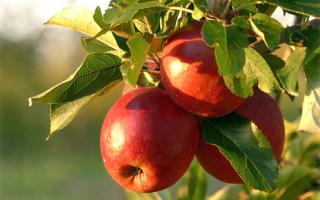

Want to discover how enjoyable it is to sink your teeth into an apple from your very own garden? Planting a formed apple tree is the first step, and you’ll know that crunchy bite as soon as next fall!
Beautiful blooming in spring, fruits when school starts, nice colors in fall: the apple tree is as beautiful as it is useful. It definitely has a space in a purely ornamental garden, even the smallest gardens can welcome it against a wall or as a potted dwarf apple variety.
Selecting an apple tree that has been formed and trained by a professional is worth the deal: it will lead to a very quick harvest – the year that follows planting – and will make your own work easier since the basic pruning and structural branches are already in place.
Plant a self-pollinating variety if you don’t have much space. If you can fit two, really invest into two apple trees of different varieties, as long as they bloom at the same time. This will promote cross-fertilization. Also, check around the neighborhood: perhaps a neighbor is growing apple, even simply an ornamental one.
Every apple tree likes deep and well drained soil. Place your tree from November to March in a hole two or three times larger than the initial root clump is.
Pruning helps eliminate dead wood and balance the silhouette of the tree at winter’s end each year. Spraying Bordeaux mixture is recommended when leaves have fallen or just as buds appear to reduce occurrence of disease. Lastly, feel free to eliminate a few bouquets of flowers in spring to promote growth of remaining fruits.
 To choose your apple tree, best is to test and sample its fruits in an orchard. Among the easiest and most productive varieties are the ‘Belle de Boskoop’ which likes damp climates; ‘Cox’s Orange’ and ‘Golden Delicious’ that fare well anywhere; ‘Granny Smith’ which bears tangy apples; ‘Reine des Reinettes’ which has fruits that keep for a very long time…
To choose your apple tree, best is to test and sample its fruits in an orchard. Among the easiest and most productive varieties are the ‘Belle de Boskoop’ which likes damp climates; ‘Cox’s Orange’ and ‘Golden Delicious’ that fare well anywhere; ‘Granny Smith’ which bears tangy apples; ‘Reine des Reinettes’ which has fruits that keep for a very long time…
Ask your local horticulturist, they’ll know which variety is best suited to your garden.
Laure Hamann, updated by Gaspard